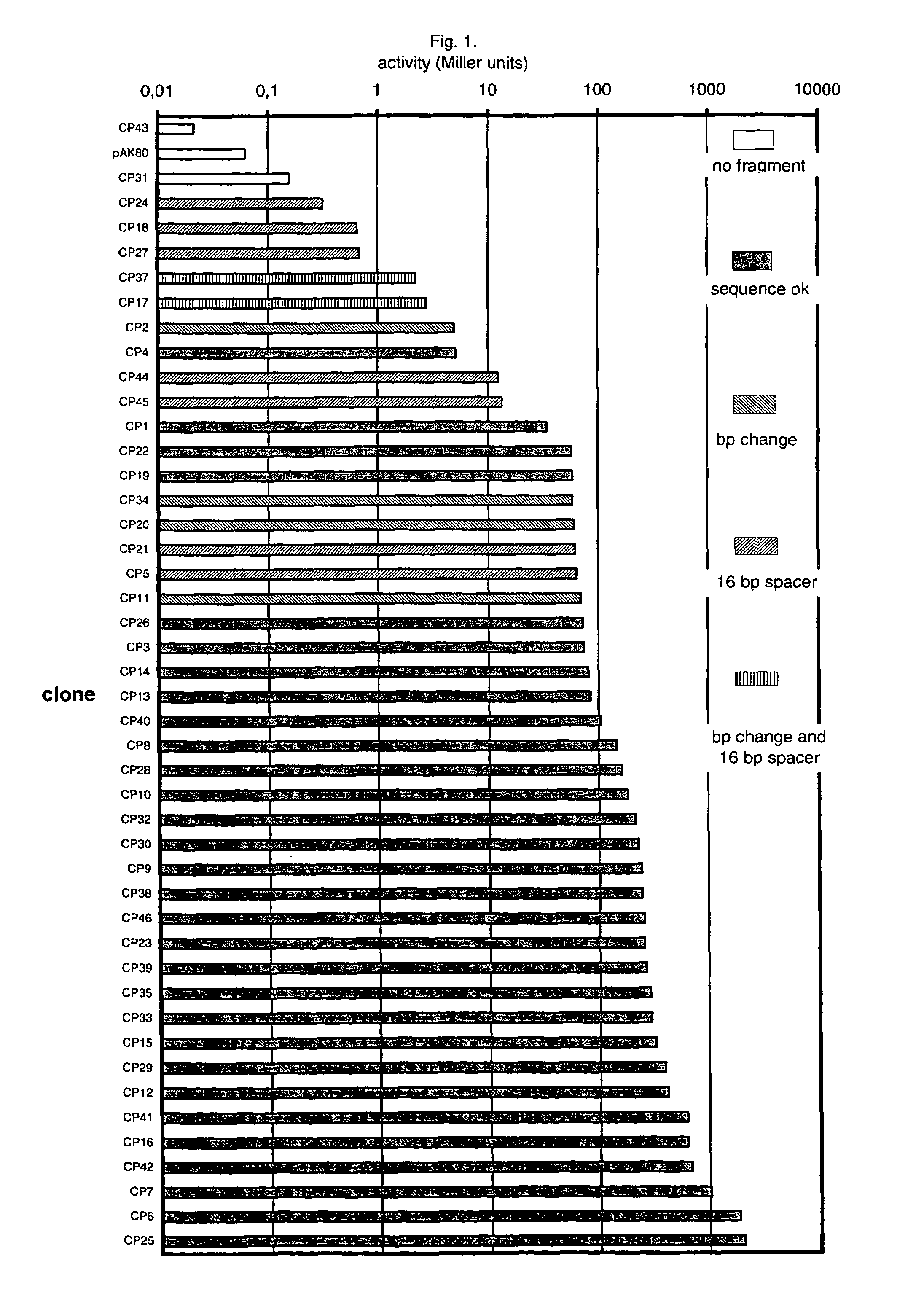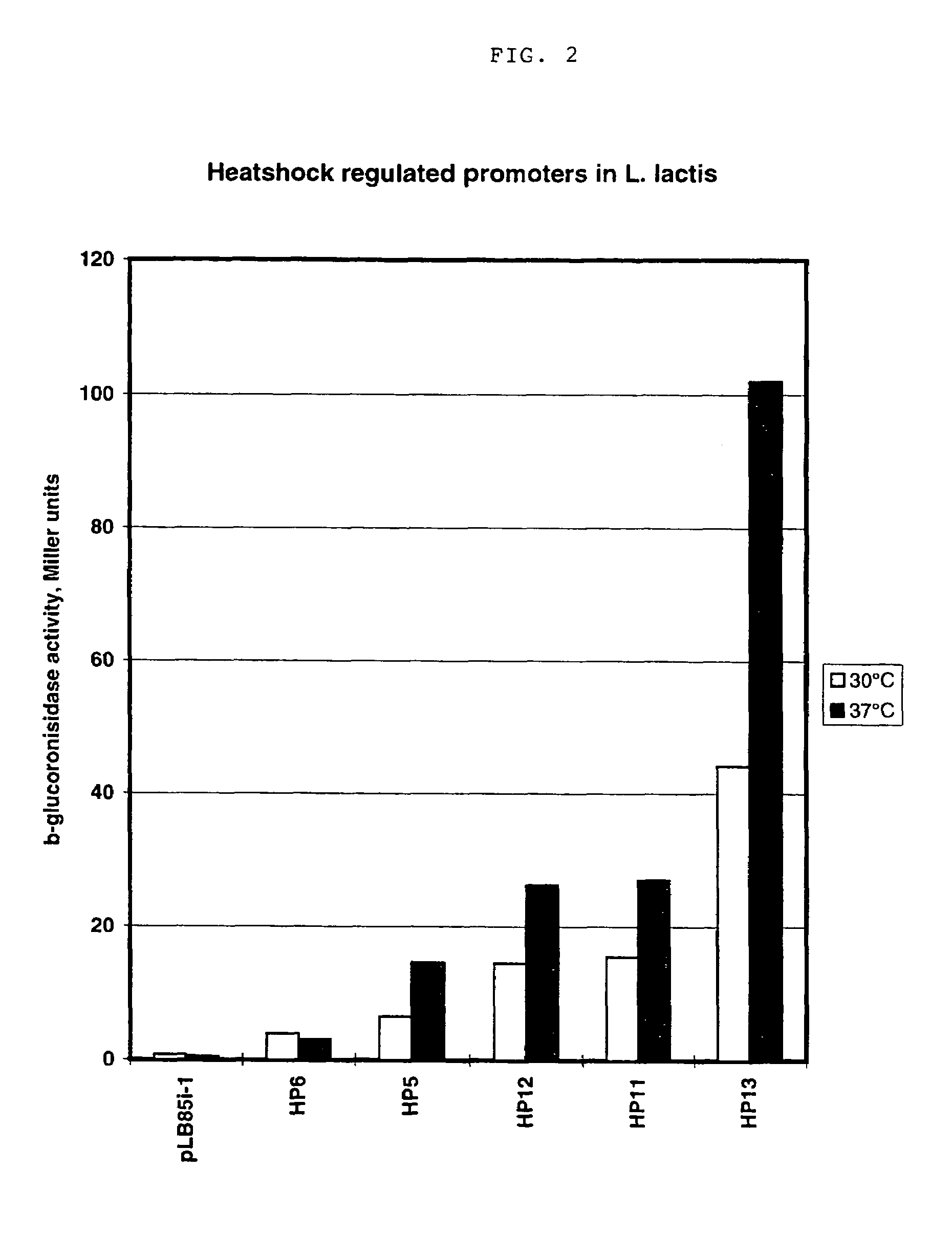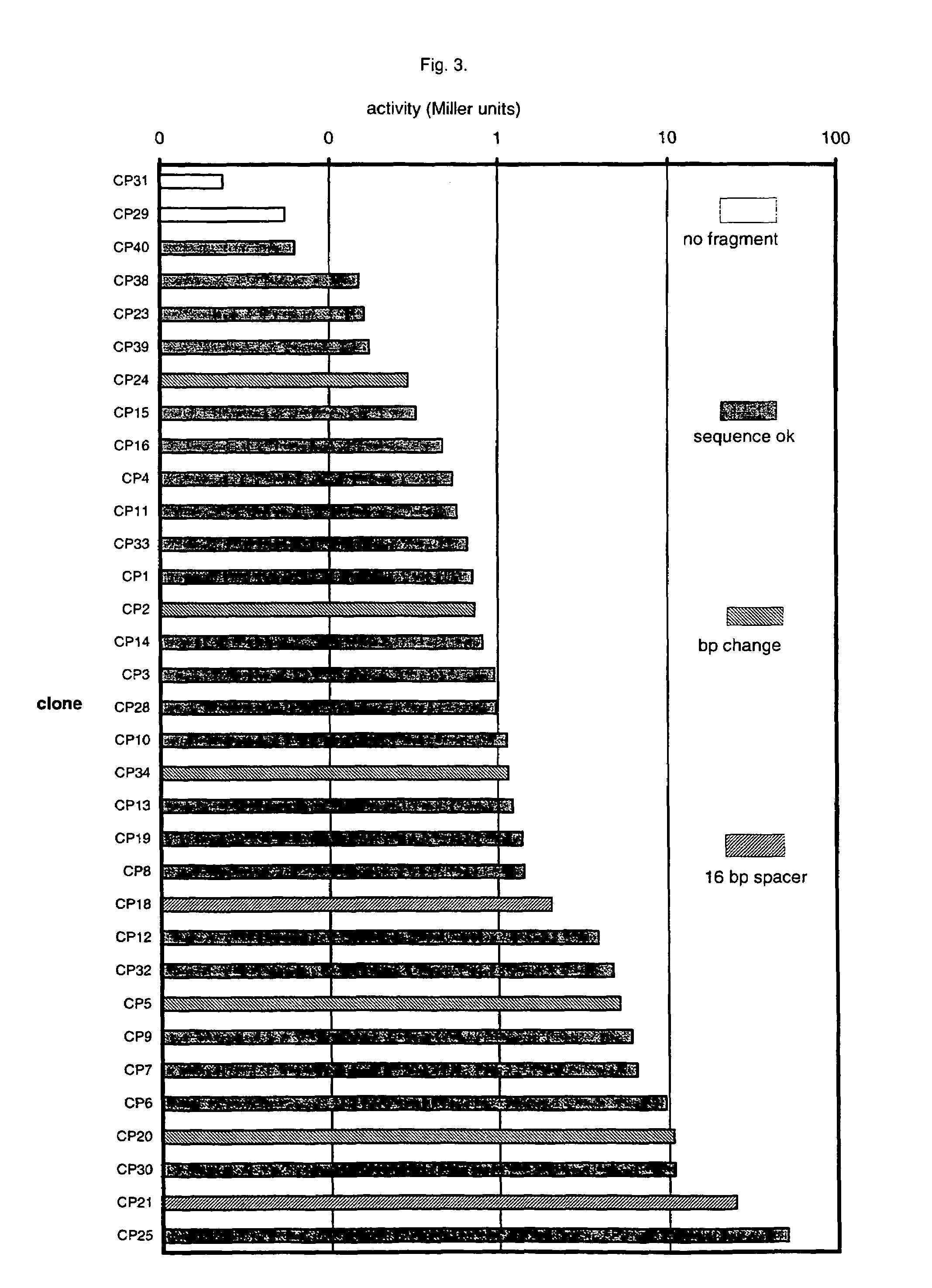Artificial promoter libraries for selected organisms and promoters derived from such libraries
a technology of promoter libraries and organisms, applied in chemical libraries, combinational chemistry, sugar derivatives, etc., can solve the problems of poor match to consensus sequences, less optimal distances between promoters, and often not practical for large-scale industrial applications. achieve the effect of strong influence on promoter strength
- Summary
- Abstract
- Description
- Claims
- Application Information
AI Technical Summary
Benefits of technology
Problems solved by technology
Method used
Image
Examples
example 1
Design of a Degenerated Oligonucleotide for a L. Lactis Promoter Library.
[0053]According to the literature (see review in de Vos & Simons, 1994), strong promoters in L. lactis tend to have the following nucleotide sequences in common (numbers refer to the position relative to the transcription initiation site, which is given number +1): −12 to −7: TATAAT; −15 to −14: TG; −35 to −30: TTGACA. The spacing between −10 and −35 seems to be 17 nucleotides. However, closer comparison of the promoter sequences that have been published for L. lactis reveals that in a number of positions besides the ones mentioned above, nucleotides are more or less well conserved. Some of these positions are: −1: A; −3: A or T (=W); −6: A; −13: A or G (=R); −40 to −36: TATTC. In addition, Nilsson and Johansen (1994, BBA) pointed out two motives, +1 to +8: GTACTGTT, and −44 to −41: AGTT, that appear to be well conserved between relatively strong promoters (promoters for transfer RNA and ribosomal RNA operons) ...
example 2
Design of a Degenerated Oligonucleotide for a Library of Temperature Regulated in L. lactis Promoters.
[0072]This example illustrates the development of a temperature regulated promoter library for L. lactis. A regulatory element comprising an eight basepair inverted repeat that has been shown to be involved in the heatshock response of L. lactis is inserted a few base pairs upstream of the −35 sequence. The minimal extent of such a regulatory element seems to be 27 basepairs, SEQ ID NO:61:
[0073]
5′-TTAGCACTCNNNNNNNNNGAGTGCTAA-3′ IR spacer IR
containing a 9 bp (or longer) inverted repeat (IR) separated by 9 (or fewer) basepairs. It should therefore be possible to combine this inverted repeat with the approach for obtaining constitutive promoters of different strength and thus obtain a series of promoters with various basal activities which can be induced several fold by changing the temperature of the culture medium.
[0074]Therefore, an oligonucleotide was designed, which ...
example 3
[0082]The Gram-positive bacterium, Bacillus subtilis is used extensively as an industrial bioreactor for the production of a range of heterologous proteins. It was therefore of interest to test whether the random spacers method of the invention could also be used to generate promoter libraries for this organism. The consensus sequences for Bacillus subtilis are very similar to the consensus sequences for E. coli and L. lactis, and we could therefore test whether the approach was also valid for Bacillus subtilis by subcloning a number of CP promoters into a promoter cloning vector for this Bacillus subtilis and then ask 1) whether the CP promoters are active in Bacillus subtilis and 2) whether, also in this organism, the spacer between the consensus sequences plays an important role for the promoter strength. We chose to use the promoter cloning vector, pDG268, which is designed for integration of promoter fusions to lacZ into the amy locus on the Bacillus subtilis chromosome. The ve...
PUM
| Property | Measurement | Unit |
|---|---|---|
| temperatures | aaaaa | aaaaa |
| temperatures | aaaaa | aaaaa |
| temperature | aaaaa | aaaaa |
Abstract
Description
Claims
Application Information
 Login to View More
Login to View More - R&D
- Intellectual Property
- Life Sciences
- Materials
- Tech Scout
- Unparalleled Data Quality
- Higher Quality Content
- 60% Fewer Hallucinations
Browse by: Latest US Patents, China's latest patents, Technical Efficacy Thesaurus, Application Domain, Technology Topic, Popular Technical Reports.
© 2025 PatSnap. All rights reserved.Legal|Privacy policy|Modern Slavery Act Transparency Statement|Sitemap|About US| Contact US: help@patsnap.com



